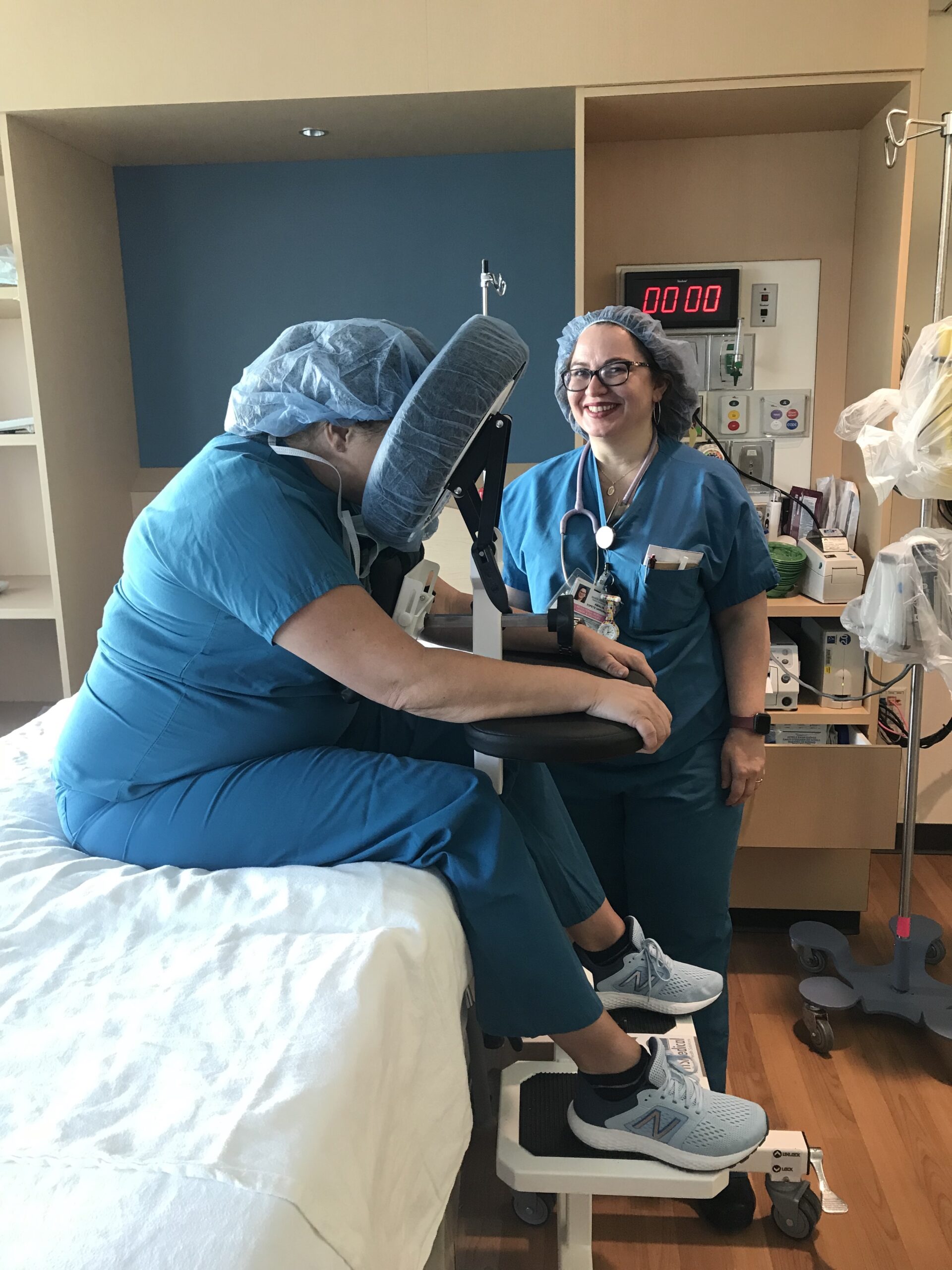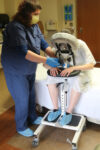The Epidural Positioning Device, Positioning Patients Safety
What commonly comes to mind when you hear the word epidural is that someone is giving childbirth, and they need an epidural to help with the pain. For a mother in labor, an epidural provides anesthesia that creates a range of numbness from the patients navel to her upper legs. This enables the patient to be awake and alert during childbirth, while allowing the patient to feel pressure. However, labor and delivery rooms are not the only recommended place for epidural procedures. Patients also receive epidural treatment in general surgery and as an outpatient treatment in pain management clinics. Doctors use epidural injections to relieve pain during and after surgery and to manage chronic pain. Although epidurals help with the pain, many patients may refuse them. The primary concern or risk with an epidural is the concern about what could happen if the anesthesiologist does not insert the needle correctly. With the development of the epidural positioning device by an anesthesiologist, patients can feel safer and comfortable when receiving an epidural. The Epidural Chair, as its commonly known, helps keep their body in the proper position and stable during the procedure.
Conditions Normally Treated with Epidurals
Doctors commonly use epidural steroid injections to relieve pain associated with the following:
- Degenerative disc disease is changes that take place over time as the discs in your spine began to break down. It can affect the surrounding nerves and cause pain.
- Disc herniation is a condition that occurs when a disk between two vertebrae slips out of place, causing the surrounding nerves to become irritated and create extreme pain.
- Osteoarthritis is a type of arthritis where the protective cartilage that cushions the ends of your bones wears down over time.
- Radiculopathy is when the pain that travels to other parts of the body radiates from the spine caused by a spinal nerve and roots disease.
What is an epidural chair?
An epidural positioning device is an ergonomic stabilizing stand that can easily be adjusted to a patient’s body to provide them with enough support to keep them from moving during these common medical procedures. Anesthesiologists developed the EPD to position patients properly for correct placement and to reduce risk to caregivers. Before the availability of the epidural positioning device, caregivers had no choice but to position and hold patients manually, putting them at risk of a musculoskeletal disorder or other injuries. Patients were also at risk of falling off the bed or table! As the caregivers held the patients, the anesthesiologist would administer the epidural placement or spinal block and hope the patient did not move. If patients moved during the procedure, they were at risk of injury. Anesthesiologists were also at risk of being the subject of a lawsuit if something went wrong.
Benefits of the EPD:
- Using an epidural positioner removes strain and injury risk to staff.
- It allows the patient to be as comfortable as possible while preventing the invasion of their personal space than the traditional way caregivers positioned their patients.
- The epidural positioner promotes bending of the neck, throat, and back area while keeping the person’s body stable.
- The patient’s back remains immobile during epidural placement.
- Reduces the risk of spreading infection throughout the facility.
With the epidural positioning device, caregivers can effectively position patients in operating rooms, labor and delivery suites, and other facilities where doctors perform epidurals and spinal block procedures.
Epidural Positioning Device and Thoracentesis
A more recent function of the EPD is that doctors are using it during thoracentesis procedures. Thoracentesis is the removal of excess fluid that has accumulated in the pleural space between a person’s lungs and the chest wall. The imaging department within the hospital typically sees these patients. A trained sonographer is tasked with positioning the patient and finding the correct intervertebral space to insert the needle. When preparing for the procedure, EPDs allow caregivers to position a patient to keep them stable and comfortable. Caregivers can adjust the machine to help support the patient’s chest, arm, head, and feet.
The epidural positioning device is suitable for operating rooms, labor and delivery suites, pain centers, or anywhere doctors perform epidurals. Because of the ability to adjust the device, it is ideal for patients of all body types and sizes.



